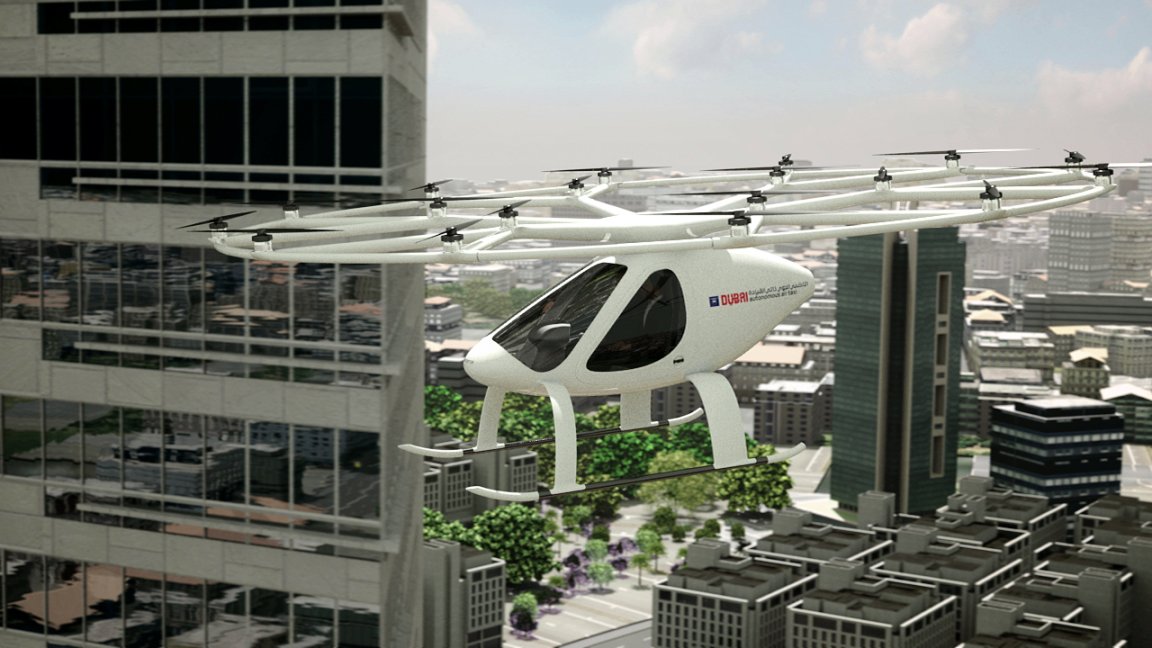
As part of Dubai’s bid to be a city of the future, they plan to have 25 percent of their public transport autonomously controlled by 2030. An exciting aspect of this is the autonomous aerial taxi (AAT) service they announced in February.
Now, they’ve provided an updated timeline for the service’s implementation, announcing that testing will begin toward the end of this year. It will continue for approximately five years until legislation is in place to facilitate a larger expansion.
The goal of the AAT is to eliminate the growing problem of traffic within the city. The service was due to launch at the end of July with the single-seater EHang 184, but the plan now it to use the two-seater Volocopter. Implementation has been delayed to ensure the technology is as safe as it possibly can be.
Dubai will be the first city to use air taxis, and its experiment will have a profound effect on the future of transport, as other cities and companies will be judging the applicability of the idea based on Dubai’s successes or failures. A particularly interested party will be Uber, which is planning to develop an autonomous airborne taxi service of its own.

A key question the transportation industry currently faces is how to deal with the congestion caused by an ever-increasing demand on infrastructure. Although air taxis are one solution, Elon Musk has been boring tunnels under cities, Dubai is developing a hyperloop, and autonomous cars are being programmed specifically to prevent traffic jams.
Whether one of these approaches proves better than the others or we end up using some combination of two or more, we’ll need to be innovative when planning the transportation of the future.
Disclosure: The Dubai Future Foundation works in collaboration with Futurism as a sponsor and does not hold a seat on our editorial board.